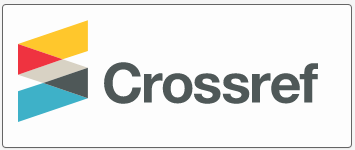Syntactic Category of Determiners in Georgian and Mingrelian (Combining Descriptive rules of Georgian Traditional Grammar and Formal of Generative Grammar)
DOI:
https://doi.org/10.52340/idw.2023.23Keywords:
generative grammar, language modeling, descriptive rules, formal rules, DP hypothesis, determiners, Georgian, MingrelianAbstract
Georgian and Mingrelian are both considered to be languages without determiners. The paper seeks to identify determiners in these languages based on descriptive rules of the Georgian traditional grammar (GTG), on the one hand, and descriptive and formal rules of generative grammar, on the other. The research question is, which grammatical units have the syntactic function of the determiners in Georgian and Mignrelian? We hypothesize that one of the subgroups of attributive modifiers defined in GTG has the same syntactic characteristics as determiners in the determiner phase (DP) hypothesis. This subgroup is so-called “modifiers functionally equalized with adjectives” within GTG. Based on the combination of descriptive rules of Georgian traditional grammar and descriptive and formal rules of generative grammar (X’ schema and PD hypothesis), we created two tests for identifying determiners in the languages under analysis. We analyzed corpus examples of the determiner (DP) / noun phrases (NP), constructed syntactic trees, and identified projection levels and structural relations of their constituents. We examined the same corpus data using the above-mentioned tests for identifying determiners. Based on the analysis we concluded that so-called “modifiers functionally equalized with adjectives” are determiners in Georgian and Mingrelian.
Downloads
References
გოგია, თ. (2022). ქართული და მეგრული ფრაზის X’ სქემა და პროექცია, (სამაგისტრო ნაშრომი). თბილისი: ილიას სახელმწიფო უნივერსიტეტი.
დობორჯგინიძე, ნ., ლობჟანიძე, ი., გუნია, ი. (2012-2022). ქართული ენის კორპუსი. http://corpora.iliauni.edu.ge/. ბოლო წვდომის თარიღი: 07/02/22 .
ენუქიძე, ლ. (1987). ძირითადი სინტაქსური თეორიები თანამედროვე საზღვარგარეთულ ენათმეცნიერებაში. თბილისი: მეცნიერება.
კვაჭაძე, ლ. (1966). თანამედროვე ქართული ენის სინტაქსი. თბილისი: განათლება.
მოერერი, პ., გიპერტი, ი., თანდაშვილი, მ., (2011-2022). ქართული ენის ეროვნული კორპუსი. http://gnc.gov.ge/. ბოლო წვდომის თარიღი: 07/02/22.
შანიძე, ა. (1953). მორფოლოგია. ტ.1, ქართული გრამატიკის საფუძვლები. მე-2 შევს. გამოც. თბილისი: სტალინის სახელობის თბილისის სახელმწიფო უნივერსიტეტის გამომცემლობა.
Abney, S. P. (1987). The English Noun Phrase in its Sentential Aspect. Cambridge, MA: MIT press.
Carnie, A. (2006). Syntax: A Generative Introduction. 2nd ed. Malden: Blackwell.
Chomsky, N. (2006). Language and Mind. Cambridge, U.K.: Cambridge University Press. 54
Chomsky, N. (2002a). Syntactic Structures. 2nd ed. Berlin: Mouton de Gruyter.
Chomsky, N. (2015b). The Minimalist Program. Cambridge, MA: MIT Press, (Orig. pub. 1992).
Dikken, M. den. (2013). The Cambridge Handbook of Generative Syntax. Cambridge: Cambridge University Press.
Lasnik, H., and Terje L. (2009). Government–Binding/Principles and Parameters Theory. WIREs Cognitive Science 1, no. 1: 40–50. https://doi.org/10.1002/wcs.35.
Progovac, L. (1998). Determiner Phrase in a Language without Determiners. Journal of Linguistics 34, no. 1: 165–79. https://doi.org/10.1017/s0022226797006865.
Santorini, B, and Kroch, A. (2007). The syntax of natural language: An online introduction. https://www.ling.upenn.edu/~beatrice/syntax-textbook







